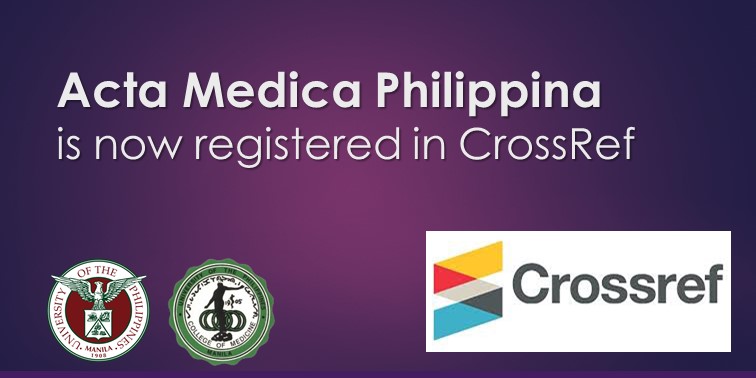Method Validation of an Ultra-High-Performance Liquid Chromatography (UHPLC) for the Bioequivalence Study of Rifampicin
DOI:
https://doi.org/10.47895/amp.vi0.10669Keywords:
rifampicin, bioequivalence, UHPLC, validationAbstract
Objectives. In response to the need for a simple and fast way of ensuring that generic drugs especially those that contain rifampicin are bioequivalent with reference drugs, this study validated an ultra-high-performance liquid chromatography (UHPLC) method of quantifying rifampicin in human plasma. The study also validated the method's selectivity, linearity, sensitivity, accuracy, precision, and the absence of a carry-over effect adhering to the Philippine Food and Drug Administration guidelines.
Methods. Plasma samples were prepared via protein precipitation using methanol containing ascorbic acid. Three microliters (3 uL) of the prepared samples were then analyzed in a Waters Acquity H-Class UPLC® system coupled to a tunable ultraviolet (TUV) detector with an attached UPLC® BEH C-18 column using a developed and optimized method. Briefly, the column temperature was set to 40°C and the sample temperature was set to 10°C. Elution was done using a linear gradient flow of a water-acetonitrile mixture that started with 45% acetonitrile increasing to 60% acetonitrile at 0.5 minutes and back to 45% acetonitrile at 3 minutes and having a constant flow rate of 0.5 mL/min. Detection was done at 340 nm. Method validation was performed following the ICH guidelines for Bioanalytical Method Validation, the same guidelines referenced by the ASEAN Guideline for Harmonisation of Standards and the Philippine Food and Drug Administration (FDA).
Results. The method had an analysis time of 3 minutes wherein rifampicin eluted at 1.4 minutes while the internal standard, rifapentine (IS) eluted at 1.7 minutes. Since no co-eluting endogenous materials were observed for the rifampicin and the internal standard, the method was confirmed to be selective. Its linearity over the range of 2 ug/mL to 25 ug/mL has been validated where it has a limit of detection (LOD) and limit of quantification (LOQ) values of 0.64 ug/mL and 1.94 ug/mL, respectively. The interday and intraday precision, reported as % coefficient of variance (%CV), and interday and intraday accuracy, reported as %error all within the limits of ±20% for the LLOQ and ±15% for the rest indicating its reliability and reproducibility. Lastly, due to the nature of the injection of the sample into the system, wherein a blank immediately follows the highest concentration standard, the method has been cleared of a carry-over effect.
Conclusion. The study successfully validated a UHPLC method of quantifying rifampicin in human plasma. Due to the sample processing method used and the chromatographic conditions set, the method can prepare and analyze samples in a simple yet fast, sensitive, reliable, and reproducible manner. The method can be applied in bioavailability and bioequivalence studies of rifampicin.
Downloads
Published
Issue
Section
License
Copyright (c) 2025 Acta Medica Philippina

This work is licensed under a Creative Commons Attribution-NonCommercial-NoDerivatives 4.0 International License.




.jpg)



